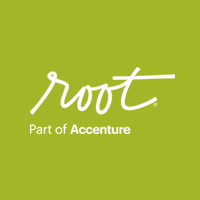Greta Roberts’ recent Harvard Business Review blog post about how differences in organizational pace can undermine post-merger integration efforts further underscored for me the challenges that result from categorizing activities as either “hard” or “soft.” As soon as something gets labeled in either category, it has a tendency to become someone else’s responsibility. The hard stuff is the domain of Finance, IT, and Operations, while the soft stuff is for HR, Training, and OD to figure out. The shrapnel is left for Sales and Marketing to piece together and try to rationalize in the marketplace. All too often, any conversations about creating, supporting, and delivering new and unique value either don’t happen or happen in isolation. In rapid order and despite best intentions, integration becomes less about creating value and more about completing a list of either hard or soft functional activities. The lenses through which employees view their responsibilities narrow, and any connection to the role they are playing in enabling a brighter future is lost. Alignment, speed, value, and, ultimately, results all suffer from the lack of cohesiveness and engagement.
Some might say that integration pitfalls are an unavoidable cost of engaging in M&A activity and these obstacles need to be factored into any due diligence efforts. We don’t agree. In our experience, the speed at which an organization can generate the desired results post-integration is exponentially increased by its ability to connect all employees to the unique and differentiated value that is being created – the “culture of competence.” To be clear, this is not about culture for the sake of culture or any of the soft definitions of culture. This is about aligning organizational focus, capability, systems, and processes to develop and enable the differentiated and rare economy of scope that was identified at the outset.
Unfortunately, the culture of competence is undermined when leaders aren’t clear or aligned on the unique competence that is being leveraged or created. As a result, these strengths never get defined, communicated, or integrated into the operations of the business or any of the post-merger integration efforts.
This lack of clarity trickles down to the managers who have been tasked with delivering on the integration expectations and making sure their people stay engaged and connected throughout the journey. Unfortunately, they aren’t clear for themselves where all of the activity leads and are unsure how they will be able to add value in the post-integration world. As their engagement wanes, so does their ability to keep their people connected in a meaningful way.
For the individual, their previous mental models on how the business works are destroyed and their ability to align their actions and efforts with what differentiates the business is significantly diminished…as is their overall level of engagement.
In part two next week, I’ll outline a series of questions that organizations can ask themselves to create better alignment around what their culture of competence should look like create success.
Related Content:
The Canyon
Managing Culture Clash in Mergers and Acquisitions
Blending Entities: Minimizing the Discomfort






